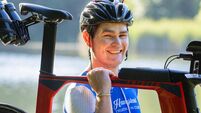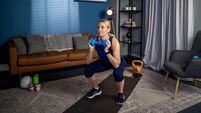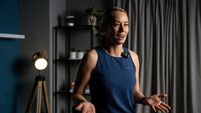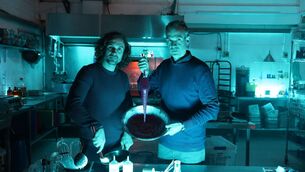Do you know how to calculate your changing daily protein needs as you age?
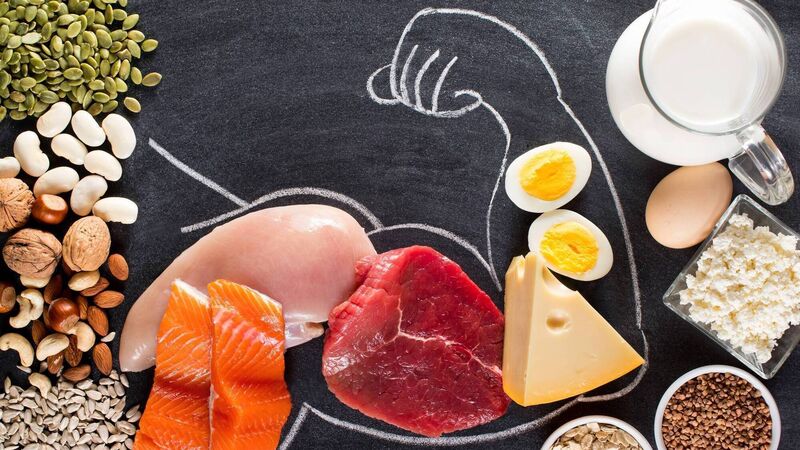
High protein foods include meat, fish, dairy, eggs, buckwheat, oatmeal, nuts, beans, pumpkin seeds and sunflower seeds
We pick up a protein bar when we’re peckish, add protein powder to porridge and slurp on protein shakes after exercise. This nutrient has never been so popular.
Yet NUTRIMAL, a research project carried out by UCD, DUC and Teagasc, found that a worrying number of those who need protein most were not aware of its importance. Some 36% of middle-aged and elderly people didn’t think protein was a significant part of their diets and 63% didn’t realise they needed more of it as they aged.
Dr Clare Corish, an associate professor in clinical nutrition and dietetics at UCD, was involved in the project. “Many older adults didn’t understand what protein was, what their protein requirements were or that those requirements fluctuated throughout life,” she says.
Protein, carbohydrates and fats are the three micronutrients that are essential for health and survival.
“We can’t live without them,” says Corish. “Protein is vital for building and repairing muscles, bones and organs and is also involved in making antibodies to fight infection, enzymes such as those used to digest food, and hormones.”
Nora Ní Fhlannagáin, a registered dietitian and lecturer in public health nutrition at the Atlantic Technological University in Galway, explains how to calculate our individual protein needs.
“The European Food Safety Authority recommends 0.83g per kilogram of body weight daily,” she says. “For an adult weighing 70kg, that’s 58.1g of protein every day.”
However, some populations need more protein. Children and teenagers require more protein in proportion to their bodyweight than adults, with a seven-year-old, for example, requiring 0.91g per kilo. Athletes and people who want to build muscles need up to 1.7g per kilo.
Pregnant and breastfeeding women and people who are unwell need more protein. “If you have an infection, a wound, or you’re recovering from surgery, you’ll need up to 1.5g per kilo,” says Corish.
Our protein requirements also increase with age. A 2018 study that followed 2,900 seniors over 23 years found that those who ate the most protein were 30% less likely to become impaired than those who ate the least.
This is because we begin losing muscle mass in our 40s. “We lose 1% of muscle mass per year and 2% to 3% of muscle strength,” says Corish.
This can eventually lead to sarcopenia, a condition characterised by low muscle mass and strength. “It’s a condition that can impair our mobility and increase the risk of falls, fractures and our need for long-term care,” says Ní Fhlannagáin.
Some accept this as an inevitable part of ageing. Others don’t even notice its onset as it’s so gradual. Whatever the reason, the outcome is that many don’t take proactive steps to slow their deterioration.
One of these steps is upping their protein intake to at least 1g per kilo. “As we age, our bodies become less efficient at absorbing protein from food and using it to build and repair muscle,” says Ní Fhlannagáin. “We need to consume more to preserve the muscle we’ve got. If we don’t get the protein we need from our diet, our body will take it from our muscle, further exacerbating sarcopenia.”
The other step that’s necessary to combat muscle loss is taking regular exercise, particularly resistance training. “Protein is one side of the coin and physical activity is the other,” says Ní Fhlannagáin.
Older people can find it challenging to boost their protein intake. “Appetite decreases with age and by eating less, we may consume less protein,” says Corish. “To counter this, we need to optimise the nutritional quality of our food.”
This on demand webinar, led by @EilsGibney & @CACorish discusses malnutrition in the older population, focusing on protein-energy malnutrition. #healthyageing #cpd #UKMAW2020 https://t.co/TWvTmwbtyG pic.twitter.com/KAVFoa2P2C
— Nutrition Society (@NutritionSoc) October 8, 2020
Other factors are at play too. “There’s the cost factor,” says Ní Fhlannagáin. “Animal proteins are expensive. Older people can have issues with their teeth, making chewing such proteins harder. And they can have mobility issues or low energy levels, making it difficult to cook.”
Statistics show that the Irish population consumes enough protein, with the National Adult Nutrition Survey reporting that the average adult gets 85g per day. However, according to Corish, these statistics exclude people living in nutritionally vulnerable populations.
“They are the people at risk, and they should be advised to make sure they get enough protein in their diets and combine it with physical activity to maintain their muscles,” she says.
If you’re worried about meeting your protein requirements, there are easy ways to add more of it to your diet. “Have a glass of milk, some yoghurt or some cheese,” says Ní Fhlannagáin. “Lean meats like chicken and turkey are high in protein as are the likes of eggs, lentils and beans.”
It’s all about finding the right balance. “Too little protein can lead to poor growth and development and a weakened immune system in children,” says Corish.
The body cannot store protein so if you consume too much of it the excess is excreted through the urine. However, it is worth remembering that the calories in protein-rich foods are the same as any other calories. “You’ll put on weight if you eat more of them than your body needs,” says Ní Fhlannagáin.
As for protein bars and powders, she draws a firm distinction between the two. Because protein bars are often highly processed, she favours natural sources of protein instead.
Protein powder, by contrast, can be useful. “If you’re time-poor or have a small appetite, you can add it to the likes of flapjacks, porridge or yoghurt to help boost your intake,” she says. “But everyday wholefoods like eggs, soya, fish and chicken give you just as much protein while also providing vitamins and minerals, making them a much more effective food for health and muscle building overall.”
- Dr Clare Corish is involved in two research projects that are currently recruiting participants. One is a European project called Appetite, and it’s seeking Dublin-based participants. Contact appetite@ucd.ie for more information. The other is called Power, and participants can be community-dwelling adults aged 70 and older living in any part of Ireland. Email catherine.fallon@ucdconnect.ie for details

Celebrating 25 years of health and wellbeing




